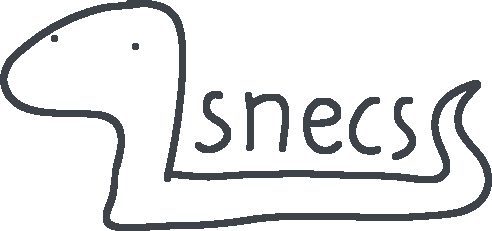What’s an ECS?¶
“ECS” stands for Entity-Component-System. It’s a software architecture pattern gaining increasing popularity in video game development in recent years, as a data-oriented alternative to classic object-orientation. It makes a lot of sense in low-level languages like Rust or C, since it immensely helps to improve data locality - and thus performance. Nevertheless, the clean, easy-to-understand design that results from mindful use of an ECS architecture appeals even to users of very-high-level languages, as can be seen by the popularity of projects like the ClojureScript Chocolatier, Mozilla’s ecsy, or the pure-Python, roughly 300-line esper.
In short, in an ECS architecture, your code doesn’t operate on complex
objects, built out of big pyramids of inheritance, methods, protocols, and
interfaces. Instead, every object in your game - an Entity - is
represented by only a plain, unique numeric identifier. As far as your code is
concerned, an entity is just 23 or 42 or 2766.
Note
If you’re familiar with relational databases, you can think of entity IDs as the primary key for a table of entities, where each record is just foreign keys to tables representing individual Components.
Useful information that can be acted upon by your code is added to entities
with Components. A component, in ECS, is just a simple piece of data,
without any behaviors attached to it. Some examples of components would be
structures like Position, Sprite, Stats. A component may hold
no data whatsoever - like a OnFireStatusEffect component, when we’re
only interested in whether an entity is on fire (has that component) or not
(does not have that component) - or it may hold arbitrarily structured and
complex data. It all depends on how you want to use them!
To actually add behaviors to Components, we use Systems. A System
is nothing more than a function that runs in a loop, and processes all the
entities and components it’s interested in. Here are some snecs examples
of Systems:
def process_movement():
for entity, (position, velocity) in query(
(Position, Velocity)
):
position.x += velocity.x
position.y += velocity.y
def process_drawables():
for entity, (position, drawable) in query(
(Position, Drawable)
):
draw_to_screen(drawable, position=position)
Proceed to Getting started when you’re ready to explore the ECS
pattern with snecs!
